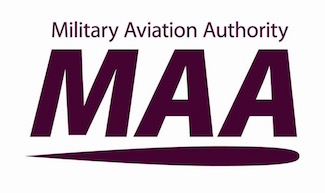 On 19 January 2015 the UK Military Aviation Authority (MAA) concluded a 15 month, end-to-end review of Remotely Piloted Air System (RPAS) regulations with the introduction of a bespoke Regulatory Framework. This marked a significant milestone for the MAA as it not only formalised RPAS regulation as distinct from manned aircraft but also streamlined the process by which RPAS are introduced into Defence.
On 19 January 2015 the UK Military Aviation Authority (MAA) concluded a 15 month, end-to-end review of Remotely Piloted Air System (RPAS) regulations with the introduction of a bespoke Regulatory Framework. This marked a significant milestone for the MAA as it not only formalised RPAS regulation as distinct from manned aircraft but also streamlined the process by which RPAS are introduced into Defence.
BACKGROUND
RPAS have been a feature of military aviation since World War I and their regulation, where appropriate, had essentially been an adaptation of regulations for manned aircraft. Whilst these were adequate for a small inventory in a predominantly test environment, the increasing employment of RPAS and proliferation of small air vehicles highlighted the need to review the application of regulations to RPAS. Specifically, legacy regulations did not adequately reflect the risk to life (RtL) that smaller RPAS posed, their often unique modes of operation and even their means of procurement compared to manned platforms.
THE RPAS MULTI-DISCIPLINARY TEAM AND WRITING THE REGULATIONS
In September 2013, in recognition of the need to develop a more proportionate and effective regulatory regime for RPAS, the MAA formed a Multi-Disciplinary Team (MDT) to conduct an end-to-end review of RPAS regulations and to make recommendations for a more appropriate regulatory regime.
Key stakeholders were invited to establish ‘tiger team’ panels to deep-dive into key areas of regulation and the wider RPAS community was invited to comment on early drafts prior to official release for wider consultation. This highly consultative approach, whilst novel, was entirely appropriate for the task and ensured an efficient and effective drafting and review process. Furthermore, dialogue with the Civil Aviation Authority (CAA) and other NATO regulators ensured alignment and proportionality with emerging global regulatory sets.
All RPAS destined for use in the UK Defence Air Environment, regardless of size, must be presented to the MAA for categorisation. Within the newly established MAA system 6 classes of RPAS have been established, each of which determines the regulatory regime that must be complied with, from light touch for Class I(a) to full compliance with the MAA Regulatory Publications (MRP) for classes II and III.
Whilst MTOW is used as the starting point for MAA RPAS categorisation, it is the intended use and operation of the RPAS that is considered to be a potentially more significant factor in understanding the 2nd and 3rd party RtL. By taking into account aggravating or mitigating factors in the employment of an RPAS it is possible for an RPAS to move up or down the categories into one with a more appropriate regulatory regime regardless of MTOW. Whilst specific examples cannot be given, the intent of the categorisation system is to ensure that an unduly complex regulatory regime is not imposed on an RPAS by virtue of its MTOW. Conversely, it may be considered appropriate to subject a small RPAS to a more demanding regulatory regime if its activity is assessed to increase the RtL.
RECREATIONAL USE OF RPAS
The MRP does not apply to the use of RPAS on military property by individuals or organisations which would be considered private, sport or recreation such as model aircraft flying clubs. That said, it still remains the responsibility of the RPAS operator to ensure that they meet any restrictions imposed at the operating location by the Head of Establishment as well as to review and comply with CAA RPAS regulations.
FUTURE ACTIVITY – PROLIFERATION
The scope of the MDT was to conduct a review of current RPAS regulations; it was recognised however that this would necessarily be only the first step on a longer journey as the use of RPAS continues to evolve. In particular, the proliferation of small RPAS such as Quadcopters procured at unit level for specific tasks such as surveying exercise areas or aerial photography was identified as an area for future consideration. The MAA has initiated further work strands to ensure that RPAS regulations address the needs of the Regulated Community.
CONCLUSION
It is anticipated that the introduction of these new, proportionate and pragmatic regulations will stimulate greater engagement with the MAA and enhance awareness of regulations across the whole RPAS community of operators. A much clearer regulatory regime has established the foundations for the next generation of RPAS in the Defence Air Environment and will help unlock the vast potential of this critical capability in the future.
[The full article can be downloaded here: RPAS Article -Ed]
Source: Military Aviation Authority
